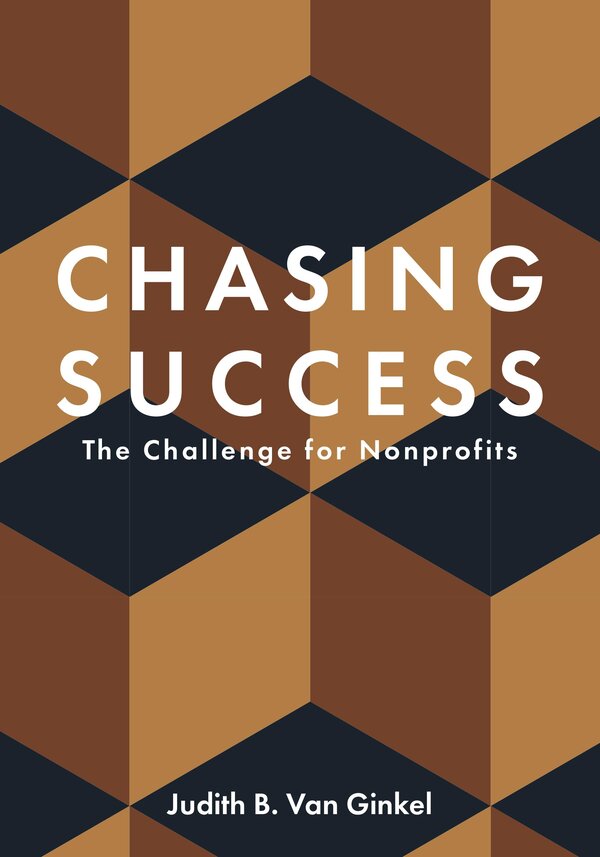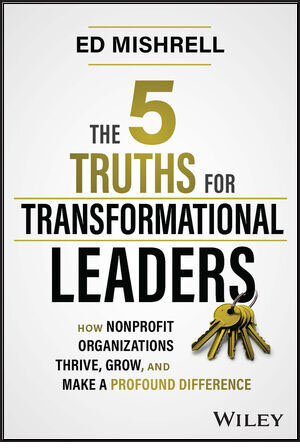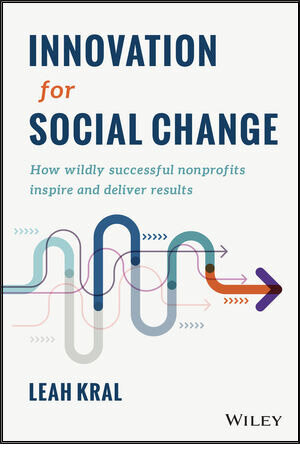Chasing Success: The Challenge for Nonprofits
Have you ever read a nonprofit’s founding story and finished feeling like you’d read a fairy tale? At their core, they go something like: “Passionate people with good ideas collaborated to solve a problem their community desperately needs help with, and their collaboration turned into our organization, and we’ve been serving the people for years. The End.” While that can leave us feeling warm and fuzzy, there’s so much more that goes into creating, sustaining, and growing a nonprofit that simply can’t be summarized in one About Us section, and none of it stops at the “happily ever after.” In Judith B. Van Ginkel’s Chasing Success: The Challenge for Nonprofits, we get a small glimpse at the larger story.
At the heart of the book is the question: What does success look like? The book uses the organization Every Child Succeeds (ECS), of which Van Ginkel was once president, as a case study to illustrate the many iterations that success and failure can take over the lifetime of one organization. Van Ginkel writes in the preface that, in its inception, the book was meant to be a retrospective for her to catalogue and process her time with the organization and identify common themes that could help other nonprofits find their place in the sector. While several themes—including a focused mission, collaborative philanthropic and for-profit partners, and a means of measuring impact—are all important to organizational success, the book sheds light on the nuances of achieving each milestone and how an organization’s response can shift and mold its future.
“As I have moved away from the daily operation of leading the Every Child Succeeds (ECS) program in greater Cincinnati, a nonprofit with an annual budget of close to $8 million, I have been able to see our work from a broader, more realistic perspective, as though someone brought new lighting to reveal unseen new facets,” she writes. “Patterns have emerged that made me think of those dragons that were vanquished and those that were merely prodded. I was able to see more clearly what we did well and where we could have improved.”
ECS was founded in 1999 in response to research showing that the first three years of life are more important to brain development than all the years that follow, and with a mission to support expecting mothers and their babies through home visiting programs in Cincinnati. ECS’s inception is a testament to one of the pillars of nonprofit success: collaboration. The organization was founded by three organizations—Cincinnati Children’s Hospital Medical Center, Cincinnati-Hamilton County Community Action Agency, and United Way of Greater Cincinnati. Each partner organization brought its own expertise to the drawing board and set an inclusive roadmap for the young organization to follow.
Van Ginkel notes that ECS made for an interesting case study because of its mission’s intersection between community and government. Children under age 3 are not yet in public school systems, and their only appearance in public records is usually through pediatric visits and census information. The uniqueness of the demographic meant that ECS was in uncharted territory and could forge a path of its own, but it also meant that the roadblocks and hurdles the organization would face in serving such a unique population were not yet apparent. As the book illustrates, while partnerships and collaboration are crucial to success and expansion, they are not always easy, especially when working with local and state governments.
ECS made a proposal to the State of Ohio and its department of health to restructure the state’s home visiting program to mirror that of ECS, which had over 10 years of experience and success with its model by that time. The proposal was an opportunity for ECS to expand, through collaboration, beyond Cincinnati and Greater Cincinnati to the whole of Ohio. The proposal was halted, however: “There was some conversation about the proposal and a few meetings, but once again, this movement toward a more collaborative structure was not implemented and barely considered,” Van Ginkel explains. “As a result, most home visiting program grantees in Ohio are small operations without organizational efficiencies, economies of scale, the capacity to deliver multiple models, ability to enlist private-sector dollars to augment public monies, or enough resources to reach more families in underserved and rural areas.”
As the book illustrates, while partnerships and collaboration are crucial to success and expansion, they are not always easy, especially when working with local and state governments.
While ECS never expanded beyond its initial program and geographic areas, the reason as to why can’t be summed up in a lack of funds or support. As with many organizations focused on issues that intersect—like child and maternal health, community building, education, and mental health—other organizations, both public and private, share the space and have their own ingrained policies and systems.
“We were able to exist as a strong program, but we were never able to significantly impact population health, serving only a fraction of those families eligible for our service. A fundamental question is this: Why, when we had most of the tools, community support, and a clear definition of need, couldn’t we serve more families?” asks Van Ginkel. “The answers are embedded in the reasons why most nonprofits can advance only so far—but no farther. The reasons likely include siloed programs, political decision making, policy and funding challenges, family perceptions and misunderstandings about the services, and perhaps deeper root causes that are just coming to light. These are barriers both subtle and overt. Creating a community forum to consider problems collaboratively, not just for ECS but for early childhood programming writ large, was not a priority.”
In the end, the case of ECS was neither a massive success nor a complete failure, a perfect illustration of the book’s title. As so many nonprofit leaders have come to understand, success is a moving target, and the measurements change with each new collaboration and milestone. Continuing to exist and serve a population that was previously lost to public view is as much a success as any. As Van Ginkel writes, “The lives of 56,000 mothers and babies were changed. Science tells us that what happens in those first 1,000 days of a child’s life has relevance for a lifetime, for two and three generations. I will not apologize for serving only 56,000.”
As so many nonprofit leaders have come to understand, success is a moving target, and the measurements change with each new collaboration and milestone.
Chasing Success is an insightful look at the aspirations and realities of the nonprofit world and certainly left this reader curious to dig past the typical success metrics that are imposed upon nonprofits. Some research past the statistics and into an organization’s history and depth of relationship with the community it serves as well as feedback from the people and partners it works with tell a more detailed story than some numbers can.
Samantha Mercado is a staff writer at Philanthropy News Digest.










